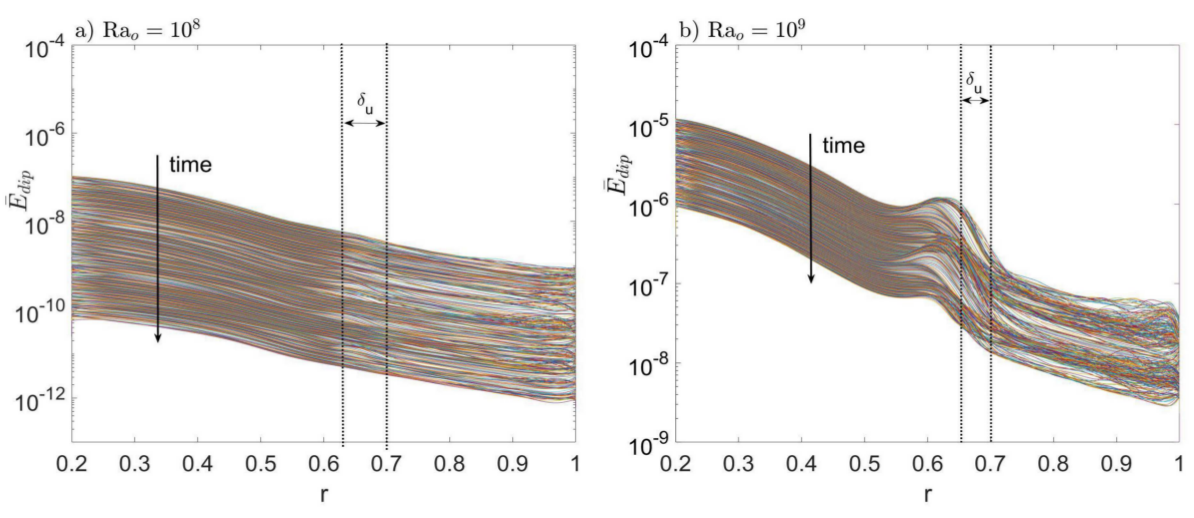Author: L. Korre, N.H. Brummell, P. Garaud, & C. Guervilly
Oct 1, 2020

Motivated by the dynamics in the deep interiors of solar-type stars, we study the interaction between overshooting convection and the large-scale poloidal fields residing in radiative zones. We have run a suite of 3D Boussinesq numerical calculations in a spherical shell that consists of a convection zone with an underlying stable region that initially compactly contains a dipole field. By varying the strength of the convective driving through the Rayleigh number Rao, we find that, in the less turbulent regime, convection acts as turbulent diffusion that removes the field faster than solely molecular diffusion would do. However, in the more turbulent regime, turbulent pumping becomes more efficient and partially counteracts turbulent diffusion, leading to a local accumulation of the field below the overshoot region δu. In Figure 1, we plot the spherically - averaged energy of the dipole mode against the radius r at different times in the exponential decay phase at a) Rao=108 and at b) Rao=109. The local accumulation of the dipole energy below the overshoot region appears at Rao=109, while this effect is insignificant in the lower Rao=108 case, which indicates that there is substantial change in the dynamics at Rao=109.
These simulations suggest that dipole fields might be confined in underlying stable regions by highly turbulent convective motions at stellar parameters. The confinement is of large-scale field in an average sense and we show that it is reasonably modeled by mean-field ideas. Our findings are particularly interesting for certain models of the Sun, which require a large-scale, poloidal magnetic field to be confined in the solar radiative zone in order to explain simultaneously the uniform rotation of the latter and the thinness of the solar tachocline.
L. Korre, N.H. Brummell, P. Garaud & C. Guervilly (2020), `On the dynamical interaction between overshooting convection and an underlying dipole magnetic field - I. The non-dynamo regime', arXiv e-prints, arXiv:2008.01857.